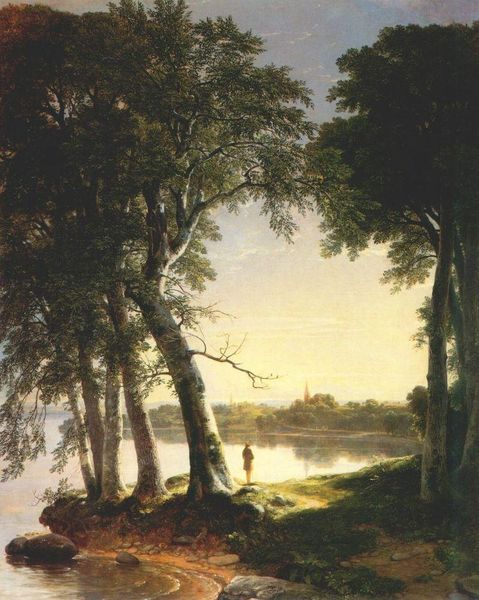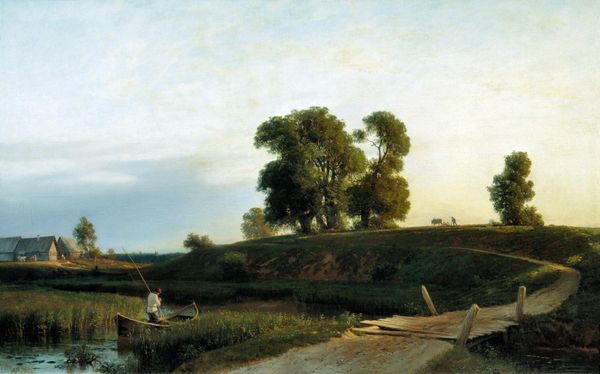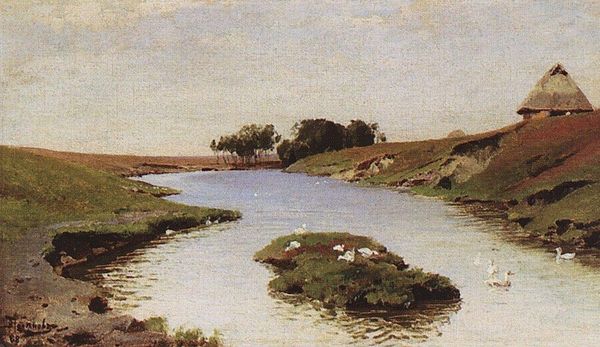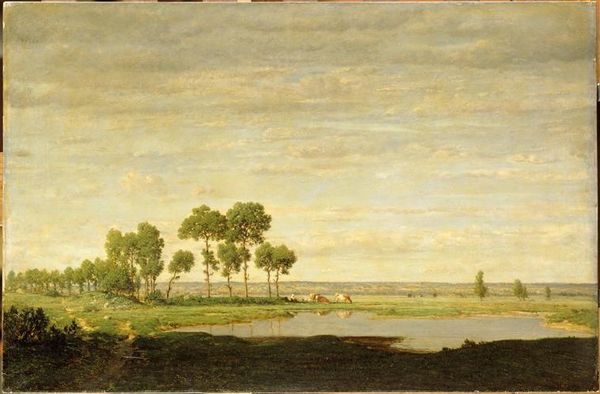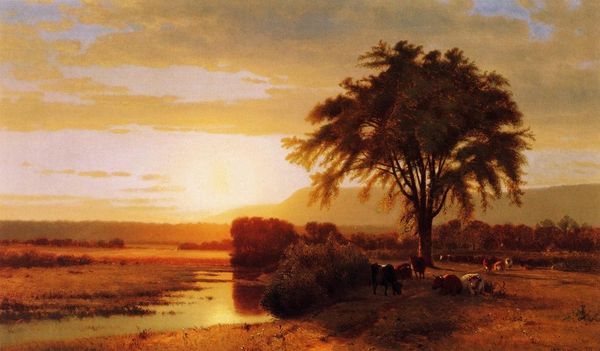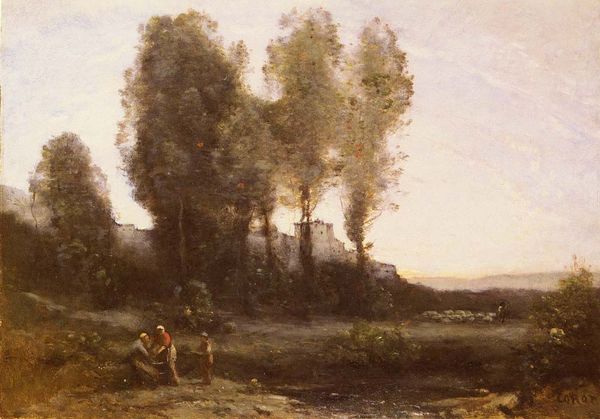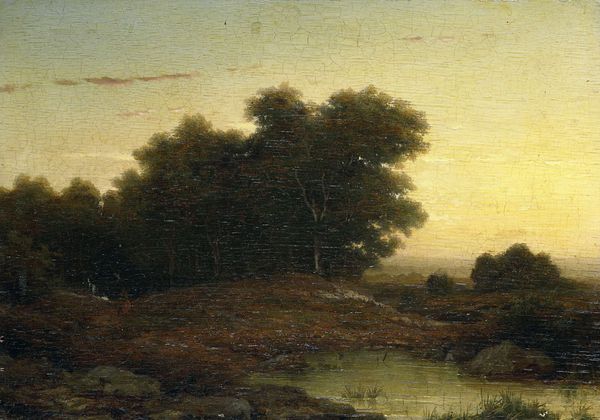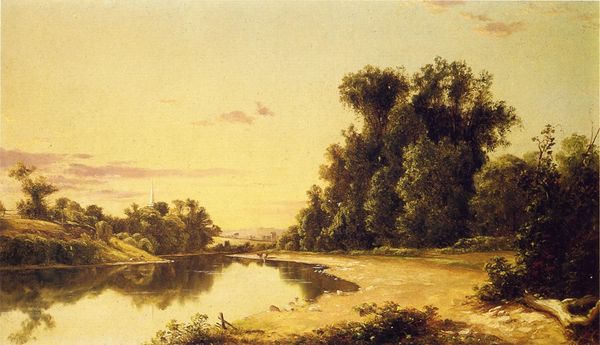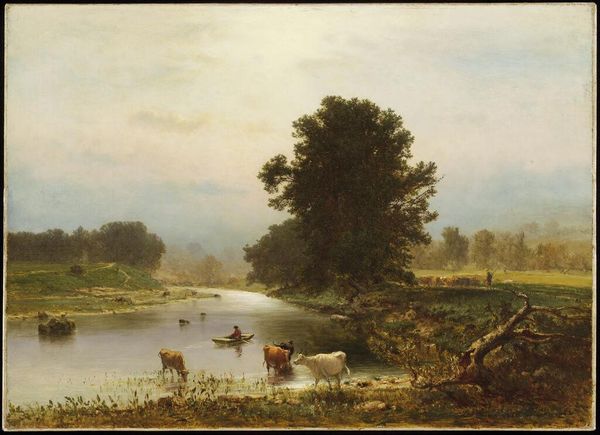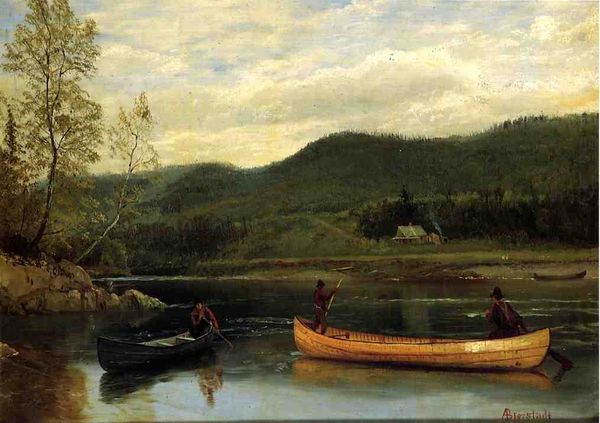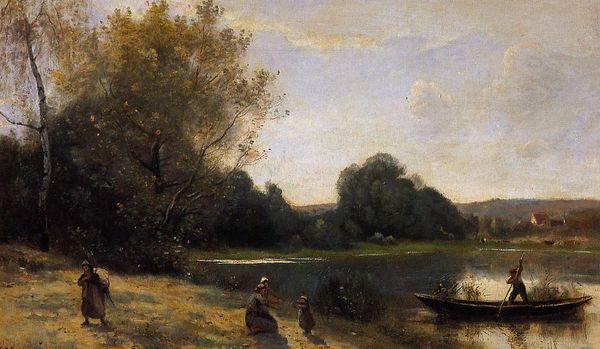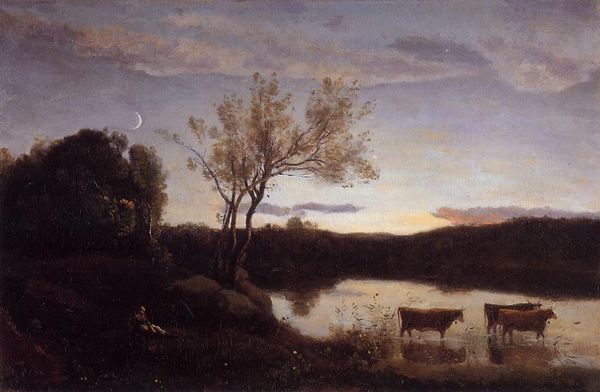
painting, plein-air, oil-paint
#
tree
#
boat
#
sky
#
lake
#
painting
#
plein-air
#
oil-paint
#
landscape
#
river
#
romanticism
#
water
#
realism
Copyright: Public domain
Curator: Here we have Camille Corot’s “Evening Landscape (The Ferryman, Evening)” painted in 1839. It’s a remarkable example of his early style. Editor: The color palette hits me first—the muted golds and browns. There's a kind of stillness to it, a quiet sense of work winding down at the end of the day. Curator: Corot was exploring plein-air painting at this time, focusing on the effects of light and atmosphere. Consider this within the broader context of the burgeoning Industrial Revolution; the landscape becomes a site of respite and contemplation. How does this resonate with contemporary notions of labor and leisure, and who had access to these ideals? Editor: Interesting point! I immediately see the materials at play. It’s oil paint on canvas; the brushstrokes, while somewhat soft, seem deliberate. There’s a layering happening, a building up of the scene. The river itself reflects light, suggesting a tangible, almost viscous quality of water, especially with how it contrasts against the density of the trees. It draws my focus on how labor literally provides what sustains these privileged moments. Curator: Absolutely. And consider the ferryman, the central figure. His presence anchors the scene and it implicitly evokes historical narratives surrounding laborers that depended on waterways and highlights themes of connectivity and passage, all seen from Corot’s perspective as a man of privilege. It encourages us to examine the complexities of labor representation within landscape art. Editor: We should discuss Corot’s treatment of light too. It’s not overly dramatic, yet there's a clear differentiation between the foreground and background. The use of shadow defines those rugged, natural materials, suggesting a slow observation and recording of a very specific temporal moment through laboring. He’s translating the actual world onto the canvas with each application of material. Curator: Corot's romantic and realistic styles give viewers a window into his aesthetic views but also challenge our understandings and awareness. Art isn’t passive; it's meant to stir discussion and deeper thought! Editor: Agreed. Seeing it this way changes how I interact with landscapes. Thinking about process, materiality, and that slow application…it reframes how labor, context and the tangible aspects of painting create narratives for viewers.
Comments
No comments
Be the first to comment and join the conversation on the ultimate creative platform.
